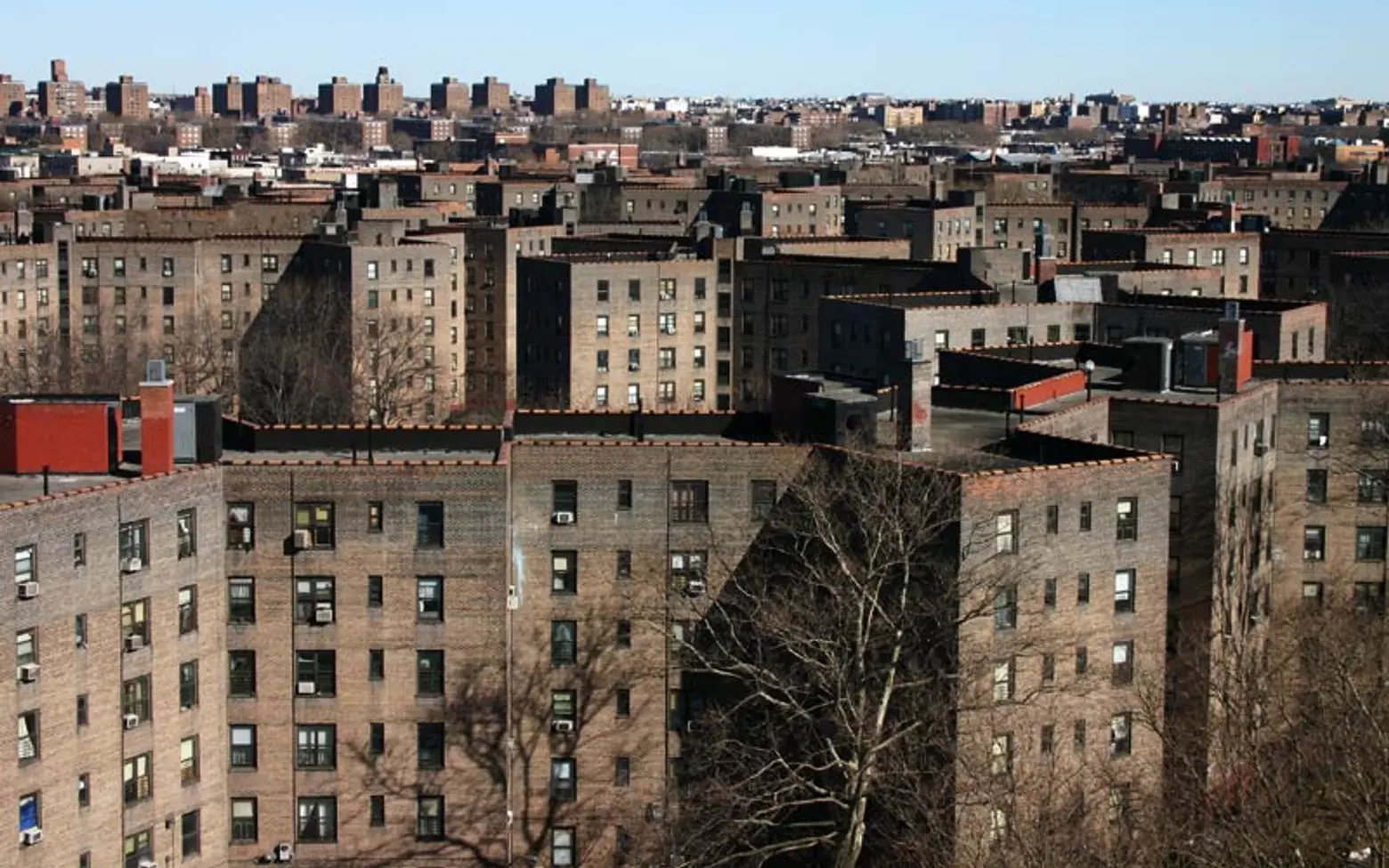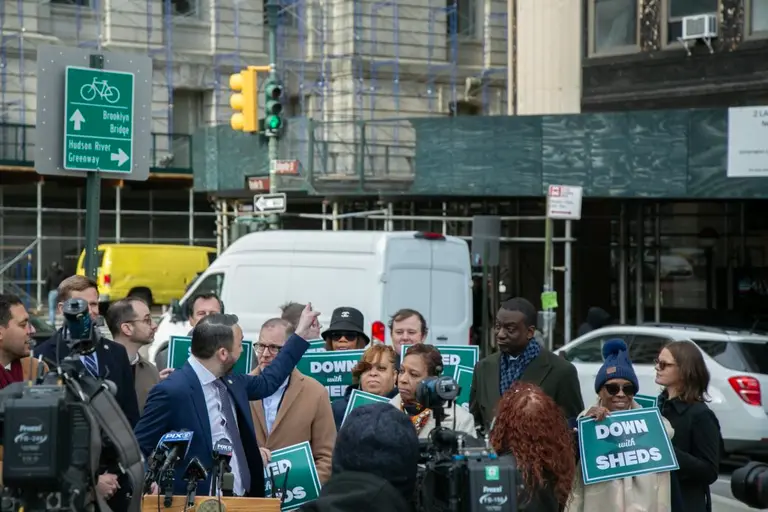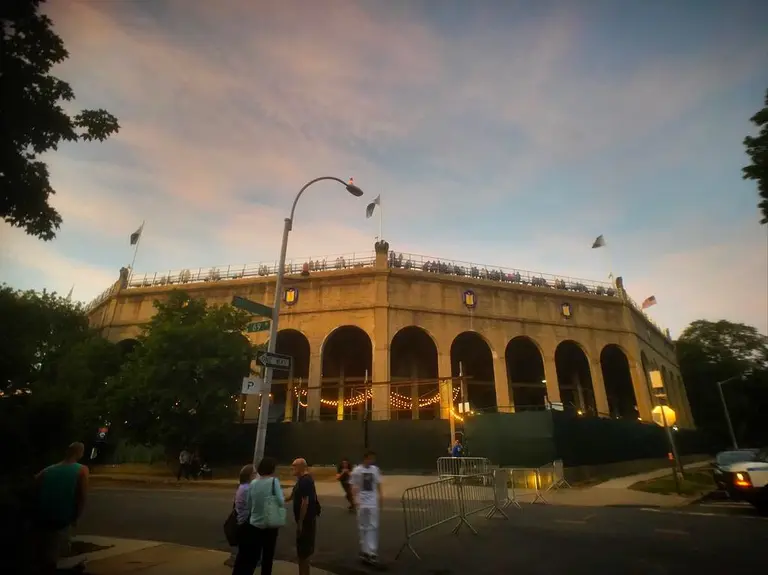Half of NYC households can’t afford basic needs, new report finds

Photo via Wikimedia
Half of all New York City households are unable to afford their basic needs, according to a new report. Released this week by the Fund for the City of New York, the report found that 1,298,212 working households, or 2,991,973 people, do not earn enough to afford essential expenses like rent, health care, food, and transportation. The number of struggling households is up to 50 percent from 36 percent in 2021, a 38 percent increase over a two-year period, highlighting the pandemic’s immense economic impact on New Yorkers.
The Fund for the City of New York is a nonprofit organization created by the Ford Foundation and the United Way of New York City in 1968 that advises government agencies on policies. This year’s report, titled “Underlooked & Undercounted,” uses data from the 2021 U.S. Census and a standard called the “True Cost of Living” (TCL) to calculate the baseline affordability for NYC households.
According to the report, the TCL is a more accurate indicator of the cost of living as compared to the dated methodology of indicators like the Official Poverty Measure (OPM)
“This report comes at a critical time for organizations supporting the community because it helps us to gain a more comprehensive understanding of how many New Yorkers are deeply affected by increasing economic insecurity and more specifically, where services are most needed,” Grace Bonilla, president of UWNYC, said.
“While the Official Poverty Measure (OPM) is broadly used, it’s become outdated. The NYC True Cost of Living report gives us the insight we need to meet New Yorkers where they are and to create pathways for them to thrive.”
According to the report, the Central Bronx has the highest rates of households struggling with inadequate incomes. These areas include the community districts of Belmont, Crotona Park East, East Tremont, Hunts Point, Longwood, Melrose, Morris Heights, Fordham South, Mount Hope, Concourse, Highbridge, and Mount Eden.
The households experiencing the highest rates of income inadequacy are those led by single mothers, with 86 percent being unable to pay for the basic needs of themselves and their young children. These rates are even higher for single mothers of color, with 87 percent of Latino mothers and 79 percent of Black mothers sitting below the TLC, compared to 60 percent of White single mothers.
For households across the five boroughs to afford basic needs like housing, food, transportation, and the ability to plan for the future, they must be making at least $100,000 a year, according to the study. In Manhattan, home to some of the country’s most expensive areas, families composed of two adults and two children need to make at least $150,000 altogether.
A vast majority of these struggling households include people of color, who are disproportionately impacted by economic insecurity. Throughout the five boroughs, 65 percent of Latino, 60 percent of American Indian, 58 percent of Black, and 51 percent of Asian, Native Hawaiian, and Pacific Islander households strain to make ends meet. It was also found that Latino households have rates of income inadequacy that are more than double that of White households.
Foreign-born New Yorkers are also more likely to face economic hardship, with 64 percent of noncitizen households across NYC lacking incomes that are sufficient to meet their basic needs.
Households with at least one child have a higher risk of not being able to afford their basic needs, with roughly 63 percent of child households experiencing income inadequacy. Children under the age of five amplify costs, with these households having a 65 percent rate of income inadequacy.
NYC households are less likely to experience income inadequacy if they have at least one working adult with a full-time job. Rates of income inadequacy for these households are 40 percent, compared to 95 percent for those households with no employed members. However, households headed by people of color or single mothers with full-time jobs are more likely to struggle to make ends meet, as they statistically receive lower returns for the same work.
The Fund attributes this exponential growth in the number of struggling households in part due to the pandemic, which resulted in the loss of jobs for thousands of New Yorkers. Black, Indigenous, and people of color communities experienced the worst financial effects of the pandemic’s economic shutdown.
“Not only do governmental poverty statistics underestimate the number of households struggling to make ends meet, but the underestimation creates broadly held misunderstandings about who is in need, what skills and education they hold, and therefore what unmet needs they have,” according to the report. “These misapprehensions harm our ability to respond to the changing realities facing low-income families.”
“Although women and people of color experience inadequate income disproportionately, New York City households with inadequate income reflect the state’s diversity: they come from every racial and ethnic group, reflect every household composition, and overwhelmingly work as a part of the mainstream workforce.”
Earlier this month it was revealed that a majority of NYC’s rent-stabilized tenants spent over a third of their yearly income on housing in 2022, according to the city’s Rent Guideline Board’s annual study. Tenants who spend more than 30 percent of their income on rent are considered rent burdened, according to federal guidelines.
Despite the apparent affordability crisis in NYC, the RGB proposed hiking up rent for the city’s nearly one million rent-stabilized apartments by the highest percentages in nearly two decades. The RGB weighed the prospect of increasing rent for one-year leases by 8.25 percent and for two-year leases by 15.75 percent.
As Gothamist reported, the city will release its own true cost of living measure, which passed as part of a ballot amendment last year. The measure aims to track the actual cost in New York City of meeting essential needs, including housing, food, childcare, transportation, and other required expenses.
RELATED:




























